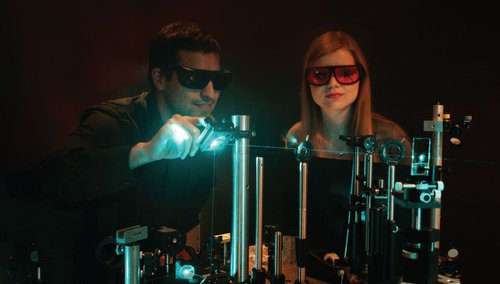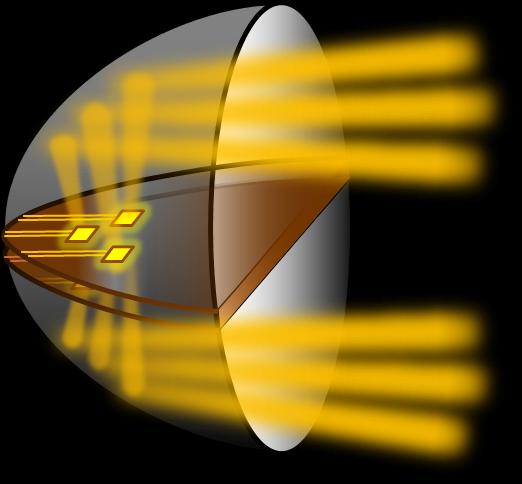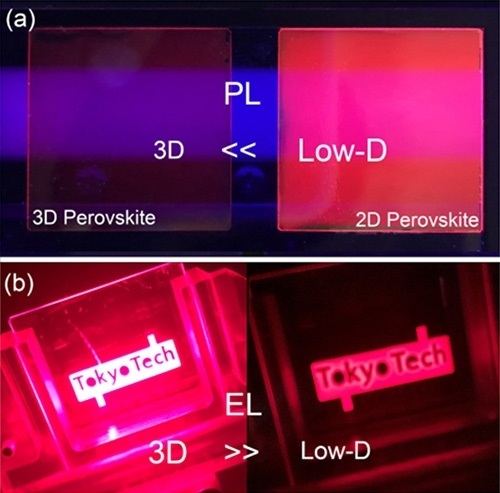January 22, 2014
The FOM Foundation and Phillips will renew their joint research programme into efficient LED light sources with a new continuous Industrial Partnership Programme (IPP). Both parties signed the new agreement on 21 January 2014.
In an Industrial Partnership Programme, FOM links academic knowledge to industrial ambitions, by carrying out cutting-edge physics research in collaboration with companies. FOM and Philips have been working together since 2005 in an IPP focused on light research, which has been carried out by a research group of FOM institute AMOLF within Philips. The research has already yielded more than fifty scientific publications in top journals and ten patent applications. The collaboration between FOM and Philips will now be continued in the new programme 'Nanophotonics for solid-state lighting'.
This is a continuous collaboration, a so-called rolling IPP, in which FOM and Philips both invest 400,000 euros per year in fundamental nanophotonics research for an undetermined period of time. The programme will be evaluated on a regular basis.
More efficient light sources
The research group involved, led by AMOLF researcher prof.dr. Jaime Gómez Rivas, is specialised in research into the interaction between nanomaterials and light (nanophotonics). Scientists can use this knowledge to strongly influence and improve the emission of solid-state light sources, such as LEDs. That forms the basis for the research programme. The researchers study both metals and dielectric and hybrid structures – a combination which makes the research unique.
Within the current IPP, the group of Gómez Rivas has already achieved groundbreaking results in the field of nanophotonics, which are important for Phillips as well. For example, example, Gómez Rivas and his colleagues combined the phosphorus in white LEDs with aluminium nanoparticles, as a result of which the LEDs acquired a light intensity up to sixty times greater in certain directions. "This was a highly promising result that clearly shows the opportunities nanophotonics can provide for solid-state light sources. In the new programme, we will apply fundamental knowledge to nanofabricated materials. That will allow us to achieve unparalleled efficiency for LEDs", expects Gómez Rivas.
Dr. Henk van Houten, General Manager Philips Research, underlines the importance of these findings: ”The results of this fundamental research have brought completely new lighting possibilities for LEDs within reach. Although the further elaboration of the work cannot be predicted yet, we nevertheless expect that in a few years time nanophotonics will have become an integral part of LED-based lighting systems.”
Combining knowledge
Both parties are looking forward to the continued collaboration. "FOM is really pleased that a company like Phillips wants to commit itself to a partnership for a longer period of time. It is not only a recognition of the quality of our researchers; such long-term public-private partnerships also have an added value for both innovation and science", says dr.ir. Wim van Saarloos, director of FOM.
The group of Gómez Rivas works at both AMOLF's Center for Nanophotonics in Amsterdam and the laboratories of Philips Research in Eindhoven. There they work closely with the Photonic Materials and Devices research group of Dr. Hans van Sprang. In this new programme, other AMOLF groups will also contribute to the research. FOM and Philips therefore expect to create an optimal cross-fertilisation between the broad fundamental base of AMOLF and industrial expertise of Philips.













